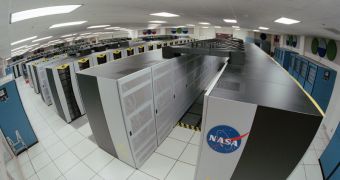It seems like the battle in the supercomputing world is preparing to reach a critical point, Russia announcing they are getting ready to enter this race with a 1.3 petaFLOPS systems that is bound to go online at the Lomonsov Moscow State University.
In order to achieve this performance, the Lomonsov Moscow State University choose to go with the Russian supercomputer vendor T-Platforms, the project consisting of two phases.
The first phase will enable the system to reach a peak performance level of 510 teraFLOPS before the end of December while the second one will bringing the total system peak performance level to a whopping1.3 PFLOPS.
The supercomputer will be based on the TB2-TL hybrid blade system from T-Platforms that comes equipped with Nvidia’s Tesla X2070 GPUs.
“Supercomputing has become a crucial factor of competitiveness for science and businesses, capable of propelling a country’s economic growth and prosperity,” said Victor Sadovnichy, Rector of Lomonosov Moscow State University.
“It is of vital importance for Russia to compete successfully with other world leaders in the development of next-generation supercomputing technology, as speed of innovation and improved quality of life depend a great deal on this technology.
The cooperation of Russian supercomputer industry leaders, both vendors and customers, is a fundamental condition required to successfully meet the many challenges we face as we move forward toward exascale levels of computation,” concluded Mr. Sadovnichy.
If the scientist manage to achieve the 1.3 petaFLOPS performance they aim for, this will become the third most powerful supercomputer in the world, surpassing the IBM Roadrunner system that is found at the DoE-Los Alamos National Laboratory in New Mexico, USA.
The only two computers that would manage to surpass the Russian system will be the Cray Jaguar supercomputer that is found at the DoE-Oak Ridge National Laboratory in Tennessee, USA and the Chinese Tianhe-IA that recently become the fastest supercomputer in the world. (via Inside HPC)

 14 DAY TRIAL //
14 DAY TRIAL //